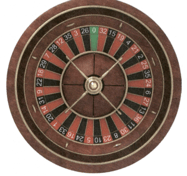David Weber, Talei Kunkel, Alexander Martinez and, Rebecca Shultis Solutions for Chapter: Probability Games and Play, Exercise 13: Practice 3
David Weber Mathematics Solutions for Exercise - David Weber, Talei Kunkel, Alexander Martinez and, Rebecca Shultis Solutions for Chapter: Probability Games and Play, Exercise 13: Practice 3
Attempt the practice questions on Chapter 2: Probability Games and Play, Exercise 13: Practice 3 with hints and solutions to strengthen your understanding. MYP Mathematics A concept-based approach 2 solutions are prepared by Experienced Embibe Experts.
Questions from David Weber, Talei Kunkel, Alexander Martinez and, Rebecca Shultis Solutions for Chapter: Probability Games and Play, Exercise 13: Practice 3 with Hints & Solutions
Originally pascals Roulette wheel head no "0". In 1842 Francis and Lois Blanc added "0" for King Charles III of Monaco.
What would the P(22) be in 1655.
Originally Pascals Roulette wheel head no zero. In 1842 Francois and Lois Blanc added 10 for King Charles III of Monaco
What would the P(22) be in 1842.
Originally Pascals Roulette wheel head no zero. In 1842 Francois and Lois Blanc added 0 for King Charles III of Monaco.
What effect does the addition of zero have on a game.
Originally Pascals Roulette wheel head no zero.In 1842 Francois and Lois Blanc added 10 for King Charles III of Monaco.

Would you prefer to play in 1655 or 1842 ? Explain.
Given the probabilities you calculated in Roulette game that you think you have a good chance of winning ? Explain.
The Monty hall problem is a famous brain-teaser inspired by the popular game show,'Let's make a Deal' that first aired on US television in . In the game, contestants are shown three doors(A, B and C), behind one of which is a fantastic prize, such as car.Monty Hall, the game-show host, gives contestants the opportunity to select one door.If the contestant selects the door with the car behind it, they win it!
Suppose the contestant selects door B.Monty then says,'Now, doors A and C are right here and they remain closed.And door B is still closed and it may have a brand-new car behind it.Remember, the probability of your door having the car behind it is , and the probability of your door having nothing behind it is.Are you sure you want door B? Write down the missing probabilities in Monty's response.Explain your reasoning.
The Monty hall problem is a famous brain-teaser inspired by the popular game show,'Let's make a Deal' that first aired on US television in . In the game, contestants are shown three doors(A, B and C), behind one of which is a fantastic prize, such as car.Monty Hall, the game-show host, gives contestants the opportunity to select one door.If the contestant selects the door with the car behind it, they win it!
Once the contestant is satisfied with their choice, Monty says,'Now, I know you want door B, but I'm going to do you a favour by opening one of the doors you didn't pick'.He then opens door C, and there is nothing behind it. Monty continues, 'Now, either door A or your door B has the car behind it, which means that probability of your door opening to the new car is .' Write down the missing probability in Monty's response.Explain your reasoning.
The Monty hall problem is a famous brain-teaser inspired by the popular game show,'Let's make a Deal' that first aired on US television in . In the game, contestants are shown three doors(A, B and C), behind one of which is a fantastic prize, such as car.Monty Hall, the game-show host, gives contestants the opportunity to select one door.If the contestant selects the door with the car behind it, they win it!
It looks as through Monty Hall has changed the probability of winning in the middle of the game. What strategy would you use if you were in this situation?Would stick with your original choice or would you change?Explain.
